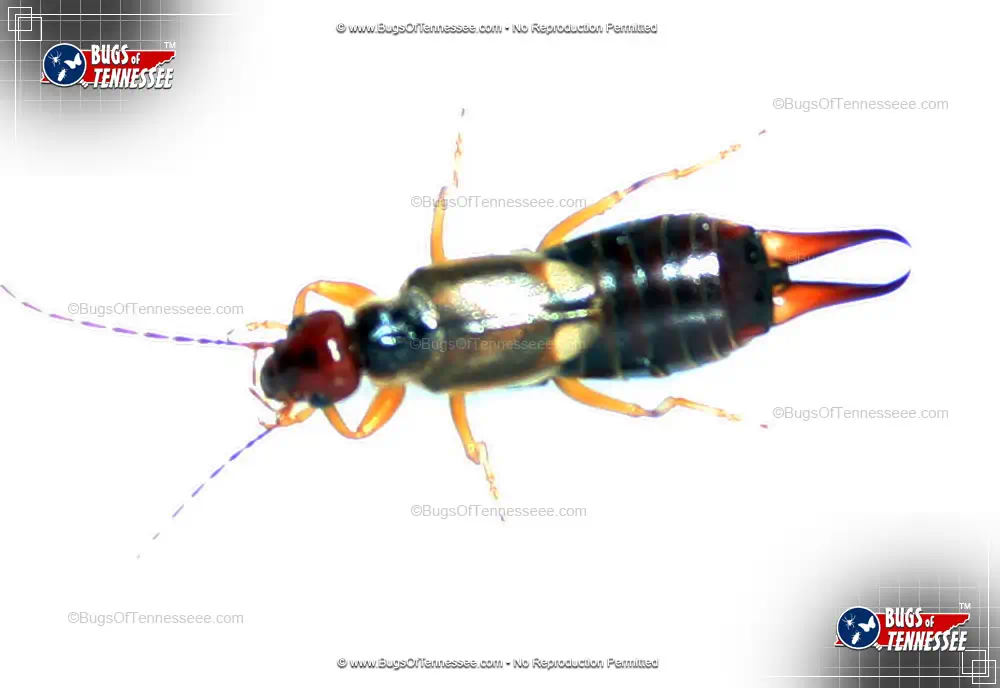Insect Order (Dermaptera)
DERMAPTERA
Earwigs are grouped under Order Dermaptera of which the European Earwig can be a common sight in Tennessee. Globally, there are around 1,200 earwig species with only 22 living across Canada, the United States, and Mexico. The pincers at the end of the body allows for immediate identification. These are used for subduing prey, self-defense, and in mating. Mouthparts allow the Earwig to chew. The idea that Earwigs make their homes in people's ears is an old European superstition that has stood the test of time. While mainly found outdoors, the random Earwig may, in fact, find its way into a human dwelling.
Taxonomy
The Taxonomic Breakdown is the scientific way to categorize a partocular insect species from its largest group (Animalia) to its smallest (variable). The Genus and Species categorizations taken together make up the species' scientific name shown above, in this case Forficula auricularia.
Kingdom: Animalia
Phylum: Arthropoda
Class: Insecta
Order: Dermaptera
Family: Forficulidae
Genus: Forficula
Species: auricularia
Characteristics
Antenna: Antenna are noticeably apparent on this insect.
Six-Legged: Six legs are common to this insect.
Description
The European Earwig has been identified by site users by the following descriptors:
six-legged outside red black brown yellow orange pincers antenna
Sighting Guide
The general likelihood of encountering this insect based on a given month of the year in the state of Tennessee. Generally, the best sighting months are June through August with peak occurring in July.
Size
Below is a representation of the 'smallest-small' and 'largest-large' sizes commonly associated with the European Earwig. Due to monitor differences, sizes may not be exact on your particular screen. Conversions to millimeters are provided for convenience.
Lowest-Low:
0.35 inches
(9 mm)
Highest-High:
0.67 inches
(17 mm)
Identifying Colors
Below you will find the colors most commonly associated with the European Earwig. Both Primary and Secondary colors are represented in the showcase. Due to monitor differences, colors may not be exact representations.
Tennessee County Reach
The European Earwig can be found in the following Tennessee counties:
Anderson; Bedford; Benton; Bledsoe; Blount; Bradley; Campbell; Cannon; Carroll; Carter; Cheatham; Chester; Claiborne; Clay; Cocke; Coffee; Crockett; Cumberland; Davidson; De Kalb; Decatur; Dickson; Dyer; Fayette; Fentress; Franklin; Gibson; Giles; Grainger; Greene; Grundy; Hamblen; Hamilton; Hancock; Hardeman; Hardin; Hawkins; Haywood; Henderson; Henry; Hickman; Houston; Humphreys; Jackson; Jefferson; Johnson; Knox; Lake; Lauderdale; Lawrence; Lewis; Lincoln; Loudon; Macon; Madison; Marion; Marshall; Maury; McMinn; McNairy; Meigs; Monroe; Montgomery; Moore; Morgan; Obion; Overton; Perry; Pickett; Polk; Putnam; Rhea; Roane; Robertson; Rutherford; Scott; Sequatchie; Sevier; Shelby; Smith; Stewart; Sullivan; Sumner; Tipton; Trousdale; Unicoi; Union; Van Buren; Warren; Washington; Wayne; Weakley; White; Williamson; Wilson
European Earwig Picture (1)
1 of 1

Image of an adult European Earwig crawling insect.; Credit: Rob D. of Chicago, IL.
This image is original to
www.InsectIdentification.org; Used with Permission.
